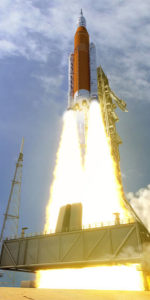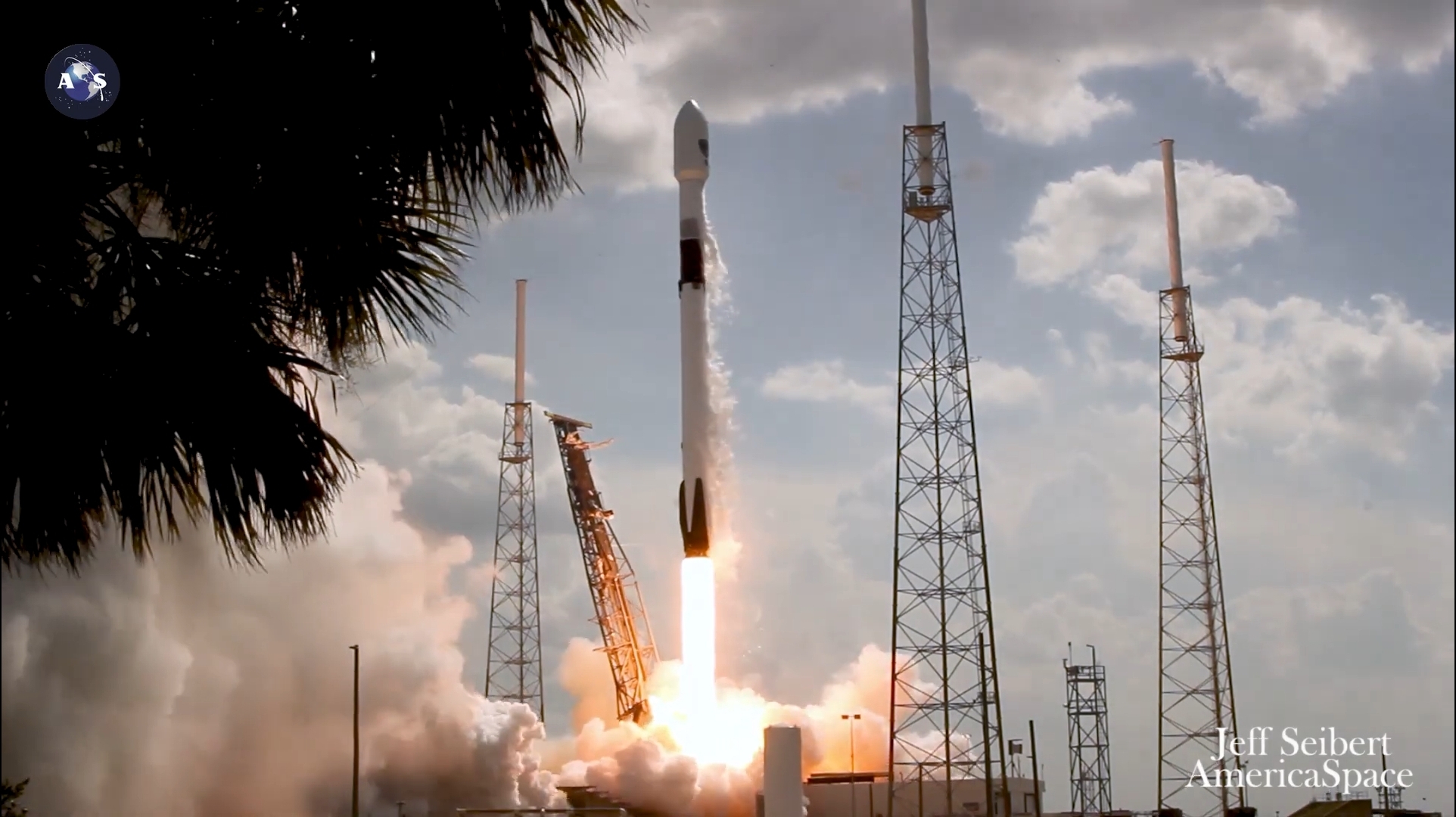
SpaceX has successfully launched and, for the first time, recovered a Falcon 9 booster following a National Security Space Launch (NSSL) mission. The never-before-used B1060 core, teamed with a sparkling-new upper stage, lifted off from Space Launch Complex (SLC)-40 at Cape Canaveral Air Force Station, Fla., at 4:10:46 p.m. EDT Tuesday, right at the end of today’s 15-minute “window”. Its primary payload—the third Global Positioning System (GPS) Block III positioning, navigation and timing satellite—was deployed 89 minutes into the mission, targeting a Medium Earth Orbit (MEO) at an altitude of some 12,550 miles (20,200 km).
Its job done, B1060 returned to a smooth oceanic touchdown on the deck of the Autonomous Spaceport Drone Ship (ASDS), “Just Read the Instructions”, wrapping up SpaceX’s third mission of June and the organization’s 11th launch of the year.
Today’s launch has been a long time coming. When SpaceX contracted with the Air Force back in March 2017 to deliver GPS III-03, the launch was targeted for March 2019, but slipped inexorably to the right, firstly to January 2020 and eventually late April. That hope, too, proved fruitless as the worldwide march of the COVID-19 coronavirus pandemic obliged the Air Force to postpone the mission until 30 June, citing the need for a 60-day “tactical pause” to implement new healthy and safety provisions to protect launch and operations personnel. “The tactical pause resulted in no impact to the readiness and availability of the GPS constellation, which remains in strong health,” noted the Space and Missile Systems Center (SMC) at Los Angeles Air Force Base, Calif., in a Monday news release. “There were minimal impacts to cost and schedule due to the pause.”
“The GPS III program brings a new standard of excellence for the entire space community. Our production team and contract partners have developed an indispensable tool that is available to military and civil users around the world.” said Cordell DeLaPena, program executive officer for the Space and Missile Systems Center Space Production Corps (SMC is the U.S. Space Force’s center of acquisition excellence for acquiring and developing military space system).
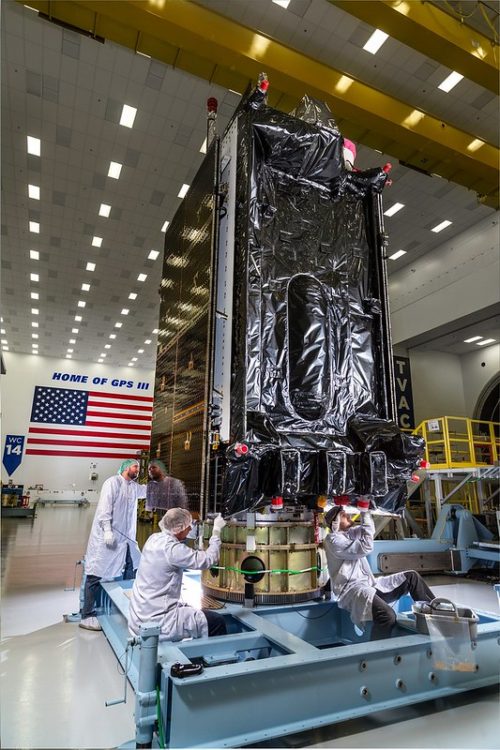
However, it remains to be seen if additional missions will fly as planned later in 2020. Even when it announced the tactical pause back in April, SMC noted that it “still plans” to fly three GPS Block III missions—all aboard Falcon 9 rockets, part of a $296.5 million contract with SpaceX announced in March 2018—before year’s end. That now appears a tall ask, although it can be expected that GPS III-04 might fly in the fall.
Weather conditions for Tuesday’s opening launch attempt were predicted to be slightly above average, with a 60-percent likelihood of acceptable conditions during the 15-minute “window”. As a low-pressure front moved off the Eastern Seaboard, low-level southwesterly flows were expected to keep storms close to the Space Coast.
“This weather pattern will continue with increasing moisture creating more storm coverage each day,” noted the 45th Weather Squadron at Patrick Air Force Base in its Tuesday morning brief, “until the low-pressure area moves away to the northeast.” Conditions would thus deteriorate markedly to just 40-percent-favorable in the event of a 24-hour scrub to Wednesday. Potential violations of the Cumulus Cloud Rule, the Anvil Cloud Rule and the Surface Electric Field Rule were anticipated near the end and shortly after the closure of the launch window.
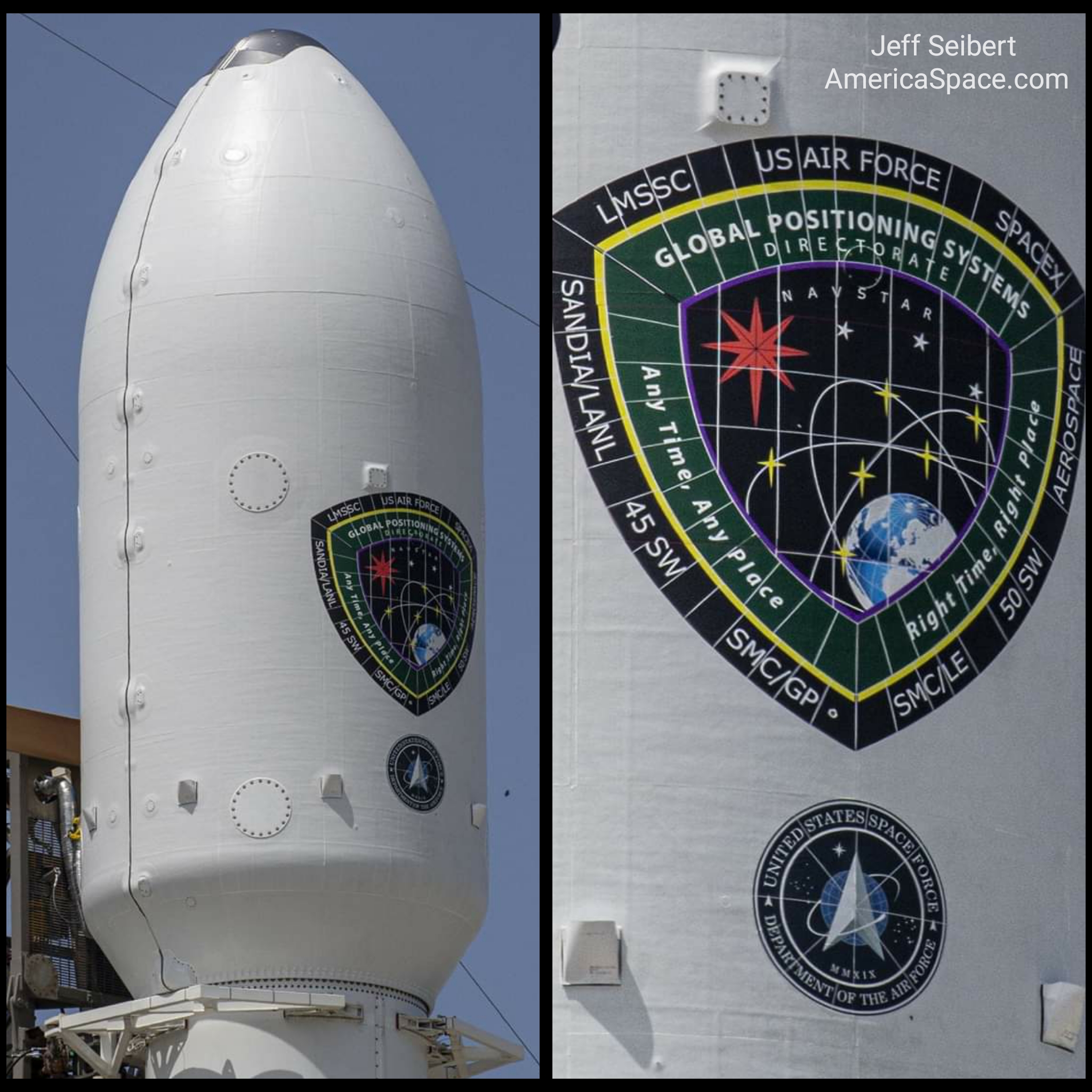
As SpaceX’s second National Security Space Launch (NSSL), following GPS III-01 in December 2018, this mission is of particularly high-profile. The 8,500-pound (3,900 kg) GPS III-03 satellite was delivered to the Cape in February from prime contractor Lockheed Martin’s facility near Denver, Colo., via Buckley Air Force Base in Aurora, to Cape Canaveral, aboard a C-17 Globemaster III airlifter. It proceeded directly into pre-flight processing at the Astrotech Space Operations facility to validate its full functionality and prepare it for propellant loading.
A few days later, the nine Merlin 1D+ engines of B1060 were test-fired at SpaceX’s site in Hawthorne, Calif., preparatory to shipping to Florida for launch. The Air Force had previously insisted that its National Security Space Launch (NSSL) missions on the Falcon 9 should utilize “new” boosters and, indeed, SpaceX’s launch of the first GPS Block III satellite in December 2018 did so atop an unflown core.
Realigned for an end-of-June liftoff, GPS III-03 was encapsulated within its bullet-like payload fairing on the 21st. In the meantime, the Falcon 9 booster rolled out from the Horizontal Integration Facility (HIF) to the SLC-40 pad surface last week and on 25 June was put through a customary Static Fire Test of its nine Merlin 1D+ engines. It was then returned to the HIF for the installation of its payload and SpaceX tweeted images of the 230-foot-tall (70-meter) vehicle back on the pad, and vertical, at 10 a.m. EDT Monday.
GPS III-03 joins two previous Block III satellites, launched via Falcon 9 in December 2018 and on the swansong flight of the United Launch Alliance (ULA) Delta IV Medium last August. Capable of a 15-year operational lifetime—a 25-percent leap over previous capabilities—the Block III carries 500 times the transmitting power of earlier GPS systems and boasts improved navigational warfare abilities, with three times greater accuracy and eight times better anti-jamming functionality.
This enables the satellites to shut off GPS service to limited geographical locations, whilst maintaining uninterrupted provision for U.S. and allied forces. Block III features a cross-linked command and control architecture, which allows the entire constellation to be updated from a single ground station. Furthermore, the satellites showcase a spot-beam capability for enhanced military (“M-Code”) coverage and increased resistance to hostil jamming. All told, these enhancements are expected to produce improved accuracy and assured availability for military and civilian users worldwide.
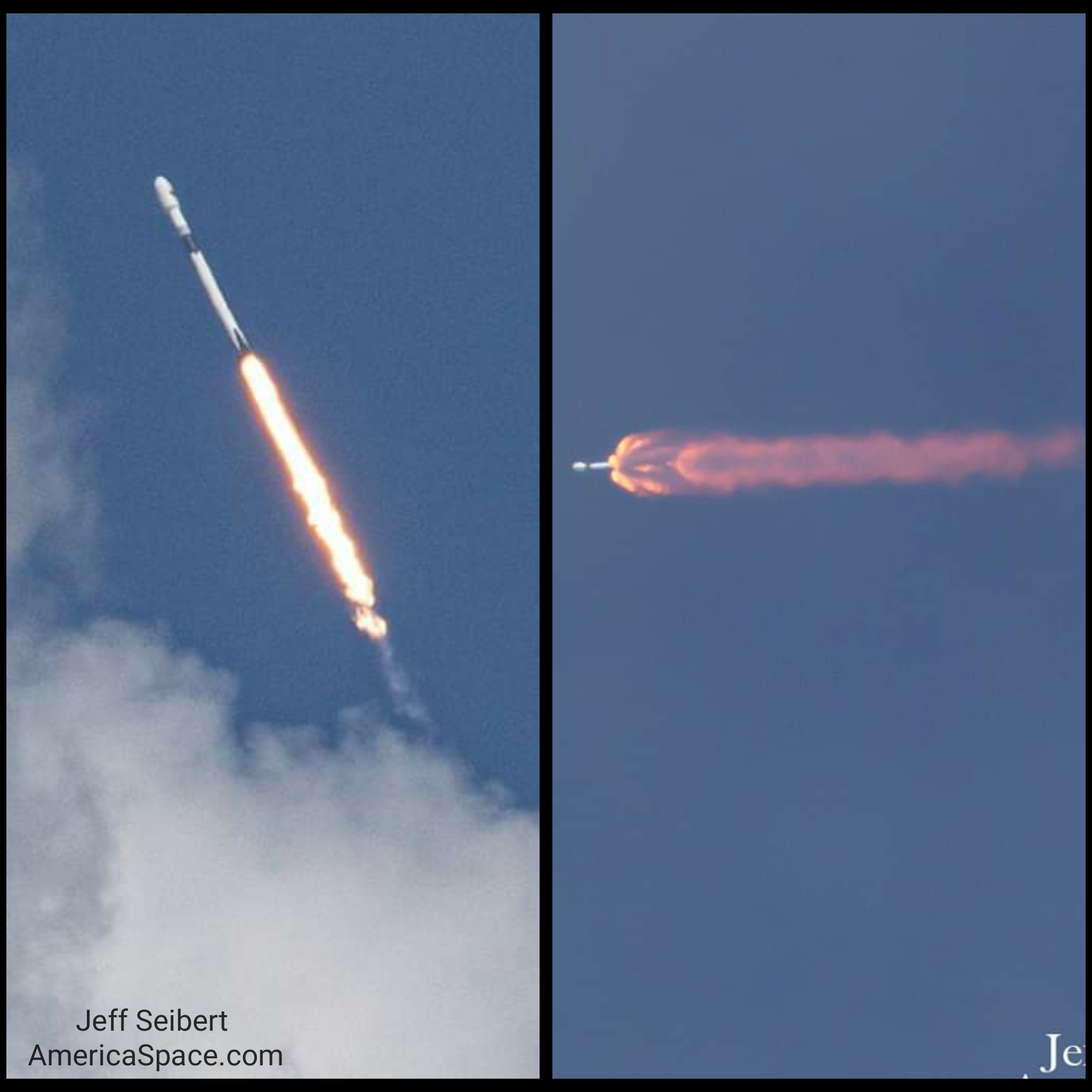
In keeping with tradition, GPS III-03 is named in honor of Christopher Columbus, the 15th-century explorer and navigator whose voyages to the Americas played an enormous role in opening up the New World for the first time to Western consciousness. The two previous Block III satellites were named respectively for “Age of Sail” explorers Amerigo Vespucci and Ferdinand Magellan. But in a notable departure from this tradition, another GPS Block III scheduled for a downstream mission in 2022 was recently named for “Hidden Figures” computer genius Katherine Johnson.
In addition to the three Block III vehicles, there are also 29 older GPS Block IIR, Block IIRM and Block IIF satellites in orbit continuing to deliver a powerful “gold standard” in positioning, navigation and timing services to support U.S. and allied operations around the world. This constellation of satellites—the oldest of which dates back to July 1997—also serves to underpin critical financial, transportation and agricultural infrastructures.
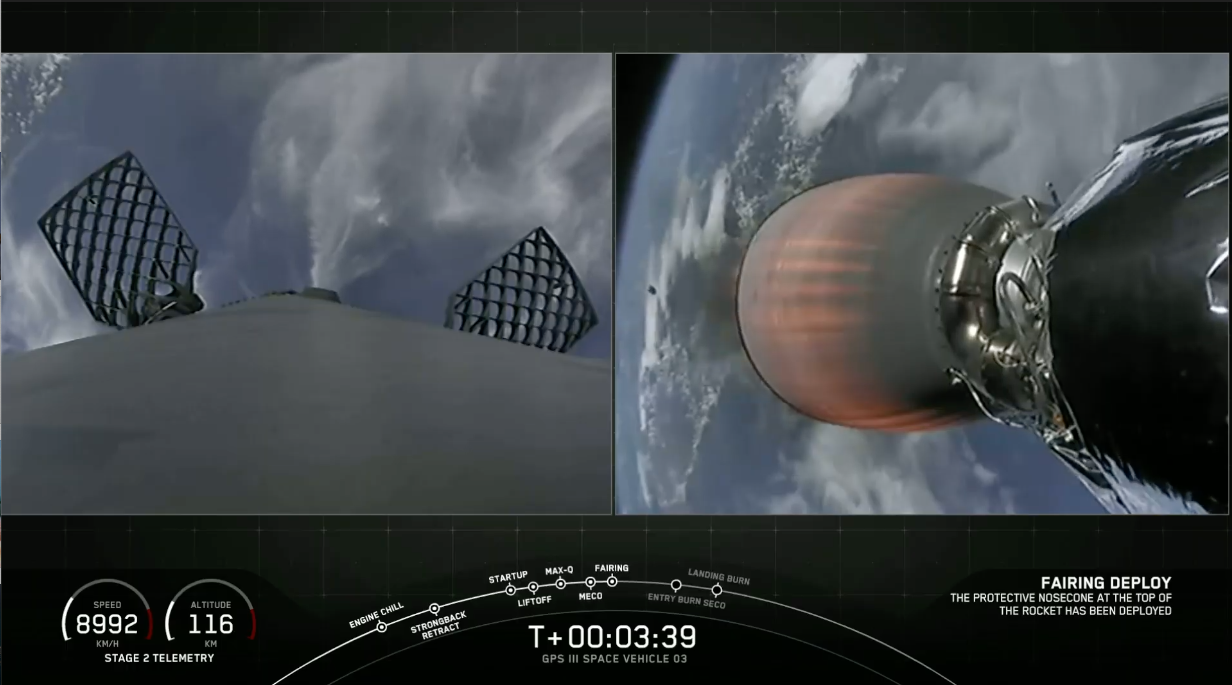
With only 15 minutes available in which to fly, coupled with an iffy weather outlook, it seemed that a scrub was becoming increasingly likely when SpaceX announced that it would target the very end of Tuesday’s launch window. “New T-0 of 4:10 p.m. EDT, due to upper-level winds,” the organization tweeted at 3:35 p.m. “Vehicle and payload look good for launch.” Today’s mission paid touching tribute to Air Force Col. Tom Falzarano, commander of the 21st Space Wing at Peterson Air Force Base, Colo., who died suddenly last month.
Following a “clean” final weather-balloon report at 4:06 p.m., all stations moved to “Green” and liftoff occurred at 4:10:46 p.m. EDT. The nine Merlin 1D+ first-stage engines pushed the stack smoothly uphill for 2.5 minutes, before B1060 separated and commenced its hypersonic return to an ASDS touchdown. The last few days have been a game of musical drone ships in the Atlantic Ocean, with ASDS “Of Course I Still Love You”—SpaceX’s long-term East Coast resident—having previously been assigned to retrieve the returning booster from the now-delayed Starlink/BlackSky rideshare mission and ASDS “Just Read the Instructions” allocated to pick up the returning booster from GPS III-03. Having been at sea for several days, and with no new launch date for the Starlink/BlackSky mission in immediate sight, OCISLY returned to port on Monday, as JRTI waited downrange of the Cape to pick up B1060.
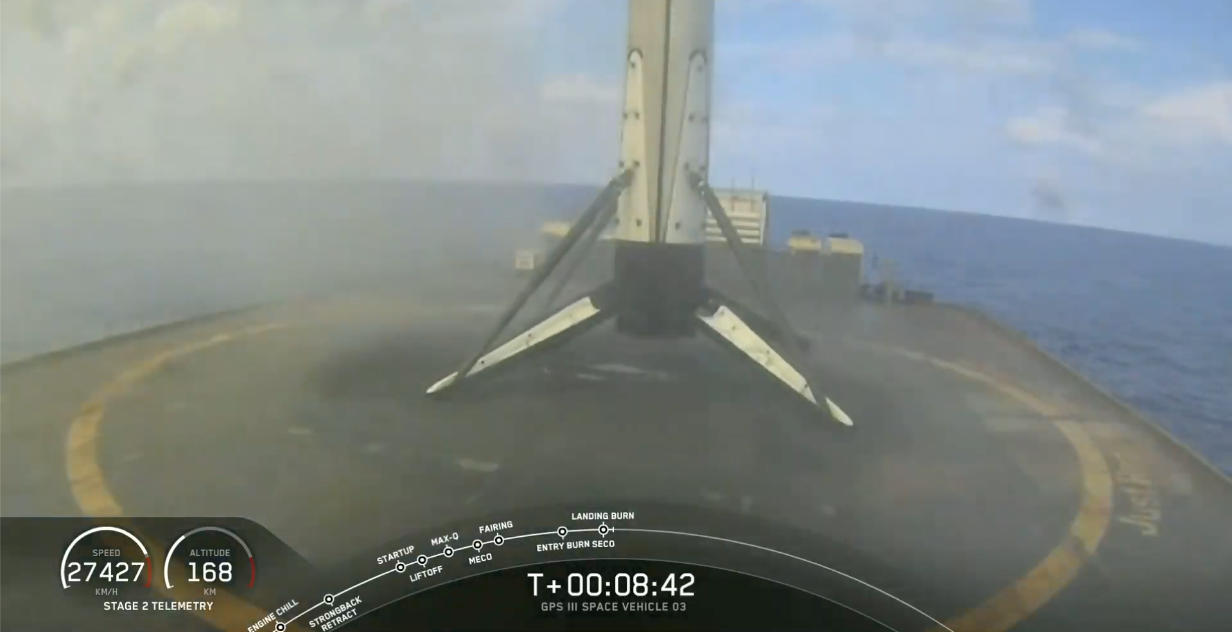
With the successful retrieval of B1060, SpaceX has now logged 36 booster landings on drone ships since April 2016. The single Merlin 1D+ Vacuum engine of the Falcon 9’s second stage then picked up the baton, burning for 5.5 minutes to deliver GPS III-03 into orbit. The stack was then expected to coast for 55 minutes, ahead of a short second burn and deployment of GPS III-03 at 89 minutes into flight.
.
.
FOLLOW AmericaSpace on Facebook and Twitter!
.
.
Missions » GPS » GPS 3 »




